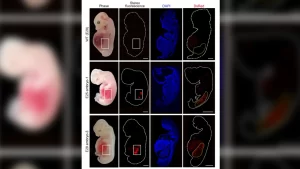We can all agree that our hands and fingers are indispensable in our lives. We need them for almost all our daily activities from brushing our teeth and getting dressed, to eating and writing.
Among our digits, the thumb is the most important one. The thumb joint is also the most commonly used joint in the hands. It gives us the ability to pinch and grasp. Pain in the thumb can be very debilitating. In this article, we explore De Quervain’s tenosynovitis, one of the possible causes of thumb pain. This condition is most common in those between 40 to 60 years old, and also more prevalent in women than men. 
What is De Quervain’s Tenosynovitis?
Everyone has 2 tendons that run along the thumb side of the wrist and attach to the base of the thumb. Tendons are rope-like structures that attach muscle to bone, enabling the muscle to pull on and move the bone. In normal circumstances, tendons are covered by the synovium (a slippery and thin soft tissue layer), which provides nutrients to the tendons and allows them to slide easily through the sheath that surrounds them. However, if you have De Quervain’s tenosynovitis, there is swelling of your tendons or thickening of the sheath that surrounds the tendons. The tendons no longer fit well inside the sheath, resulting in pain when you move your thumb.
What Are the Signs?
The most common sign is pain and tenderness along the thumb side of your wrist. This pain usually starts as an aching sensation and progresses to a point when any thumb or wrist movement produces sharp pain. The pain might limit your normal daily activities like lifting objects with your hands, grasping an object or turning your wrist when you wring your clothes. If left untreated, the pain can also radiate to your forearm. Other signs include swelling or numbness near the base of your thumb. There could be a squeaking sound when the tendons move within the swollen sheaths or a snapping feeling when you move your thumb. When you see a doctor, your doctor might do a physical examination and observe for any pain and swelling along the thumb side of your wrist. A test called the Finkelstein test is also commonly performed as part of the diagnosis. You have to place your thumb in your palm and grasp the thumb with your other 4 fingers. Then bend your wrist towards your little finger. If you have tenderness or pain at the base of your thumb, it is a telltale sign of De Quervain’s tenosynovitis. X-rays are usually not needed for diagnosis but can be performed to rule out other causes of thumb pain.
What Causes De Quervain’s Tenosynovitis?
Although the exact cause of this condition has not been established, it is linked to the risk factors below:
1. Overuse of the thumb and wrist
Repetitive movements of your thumb or wrist due to your hobby or occupation can result in inflammation e.g.:
- Playing golf or racket sports
- A waiter carries trays all day where resistive thumb motion is performed repeatedly
- A cook whose wrist is in an awkward position for long periods while peeling ingredients daily
- A cleaner or dishwasher performs repetitive twisting of the wrist combined with prolonged gripping when scrubbing surfaces or wringing towels
2. Injury
If you have previously injured your wrist or tendon, scar tissues might have formed that restrict the movement of your tendons.
3. Hormonal Changes and Pregnancy
Hormonal changes during pregnancy can cause sore or inflamed tendons. In addition, young mothers are at risk of De Quervain’s Tenosynovitis (some call it “Mummy’s thumb”) due to the responsibilities of motherhood like lifting, carrying and nursing the baby throughout the day.
4. Arthritis
People with rheumatoid arthritis may be more prone to developing De Quervain’s tenosynovitis.
Conclusion
De Quervain’s tenosynovitis is one of the possible culprits of thumb pain. If you have any of the abovementioned signs of De Quervain’s tenosynovitis, you need to identify the triggers and avoid them. More importantly, do not delay seeking professional treatment because if left untreated, the pain may spread and radiate into the forearm, causing even more limited range of wrist motion and increased difficulty in using your hand. In the next article, we will discuss how to manage De Quervain’s tenosynovitis.












